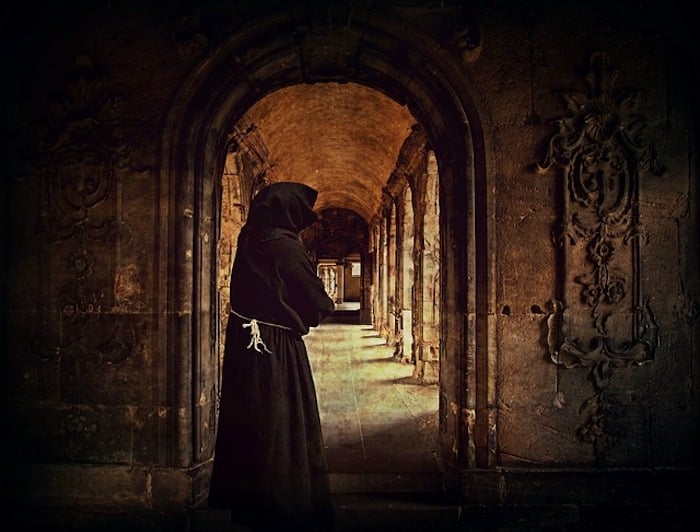It might seem a trifle uncouth to make fun of the dark ages for being relatively unenlightened about medieval health practices.
After all, it’s kind of in the name.
“Dark. Dark, no light,” as Arthur Dent might observe.
Still, when presented with a potion of boar’s gall, or a poultice of goat’s bladder, you might start to question whether all this was really (a) necessary and (b) likely to work, no matter how uneducated you were!
Most people went ahead with received wisdom anyway. So imagine being subjected to these medieval health practices.

Contents
Top 4 Weirdest Medieval Health Practices
4. Dwale
Dwale, despite its lame name (it’s actually pronounced “dwaluh”, not “dwayle”, but it’s still fairly lame), was a brutal concoction. Made of substances such as hemlock, henbane, and opium, it was prescribed as a general anesthetic – general in the sense of, “eh, anything will do!”.
It certainly worked, in those patients who’d been given hemlock did tend to go to sleep…
…they just didn’t generally wake up again later!
3. Just Push It, Push It Real Good
This was the solution for a large number of medieval health practices.
Did you have cataracts? Push that sucker right into the back of the eye!
Hemorrhoids? Push it!
Broken leg? Push it!
Childbirth?
Well, actually, that’s a fair point.
A fair point that coincidentally leads into the next part of this list…
2. Childbirth
These days, what with all the water-births and soothing whale noises and lovely midwives who help you through every step of the process, childbirth is still an agonizing and scary experience for new mothers.
Have some sympathy, then, for medieval mothers-to-be, who would be told that they were likely to die, and encouraged to say their last rites! Not exactly a procedure designed to put you at ease…
If a baby happened to be positioned wrong, the high tech medieval solution was to shake the bed until it ended up the right way. No wonder childbirth mortality statistics were so high.
1. Clysters
No, not the place where nuns live. At least, not nuns outside dodgy retro horror movies like Black Narcissus. You’re thinking of cloisters.
Clysters is much worse, so, naturally, it’s the only treatment that survived outside the medieval period and went on to become highly fashionable. In its day it was used as everything from an alternative to herbal acne treatment, to an attempted cure for the Black Death.
What was Clysters? A long hollow tube with a spoon on the end would be stuck in your bum, and water or bile would be injected into it. It was a fourteenth-century enema, and just as bad then as it would be now.
Many years later, King Louis the Fourteenth of France was reputed to have had a great many of the procedures that developed from clysters, some of them allegedly going on while court was still in process. Probably not what you’d expect to see!
Thank Goodness For Progress!
There was no single cause for the number of bizarre cures offered in the Dark Ages. Desperation and ignorance undoubtedly played a large part, but there must’ve been a fair few con artists and quacks laughing behind their sleeves as well.
All I can really say is, I’m glad I’m alive today – I’ll take modern medicine, whether mainstream or alternative, over the medieval health kind any day!
